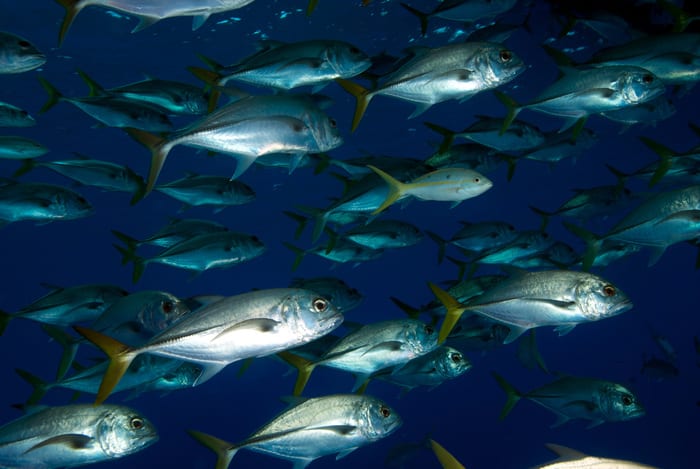Aquaculture: A Growing Opportunity for U.S. Soy
- Category:
- Aquaculture
- General News

Aquaculture and the growing opportunity for U.S. Soy was a featured topic in the U.S. Department of Agriculture’s (USDA) Foreign Agricultural Service’s (FAS) monthly update, February Oilseeds: Markets and Trade.
The original story is reprinted below:
Aquaculture: A Growing Opportunity for Soy
Fishmeal is considered a premium feed ingredient due to its nutritional value and ease of digestion for most animals, especially in aquaculture. The energy and protein content of fishmeal makes it a very coveted product in the feed ingredient market, which is also reflected in its high price. Due to the nature of fishmeal production, which is limited by catch quotas and weather trends, prices of fishmeal correlate closely to the level of output. As seen in Figure 1, prices have had an inverse relationship with Peru fishmeal production, as it is the largest producer in the world. Hence, global fishmeal prices rise when Peru’s production is falling, and drop when production is rising.
Recently, however, fishmeal prices have been tracking more closely to that of soybean meal. Fishmeal prices are increasingly independent of corresponding changes in global fishmeal production, especially after 2014 where prices surpassed $2,000/ton. In addition, fishmeal prices have been showing a steady decline, averaging around $1,300/ton in 2017, which closely follows the downward movement in soybean meal prices.
A large part of this change in price dynamics is due to newer methods that are being introduced to utilize soybean meal in aquaculture, such as pelletized soybean concentrate and intensive pond aquaculture (IPA). IPA allows high yield, year-round production of aquaculture, which has in turn increased the demand for fish feed. As global aquaculture production growth outpaces the availability of fishmeal supplies, soybean meal has been fulfilling the need for alternative protein feed ingredients, especially after promising results from trial runs conducted by USSEC and researchers. The U.S. Food and Drug Administration's 2017 approval of taurine in fish feed, which allows augmenting plant-based feed with crucial ingredients for aquaculture, also opens up new opportunities for soybean meal in aquaculture.
This trend can be also seen in the steady reduction in the global fishmeal/soybean feed ratio, adjusted for protein content. Based on USDA data, global soybean meal feeding was roughly 10 times of fishmeal feeding in 1987, now it is estimated to be 50 times more in 2017. The same market shifts can be found in leading fishmeal-consuming countries as well, such as China and the European Union. With an increasing global supply and rising affordability, soybean meal seems to be increasingly more popular in aquaculture, as supported by USDA data showing rising consumption.
Due to its unique characteristic of high protein and strong appeal in niche markets, demand for fishmeal appears to be firm. Going forward, however, limited growth in fish catch, improved applications of soybean meal, and relatively low prices are expected to increase opportunities for soybean meal exporters.

https://apps.fas.usda.gov/psdonline/circulars/oilseeds.pdf